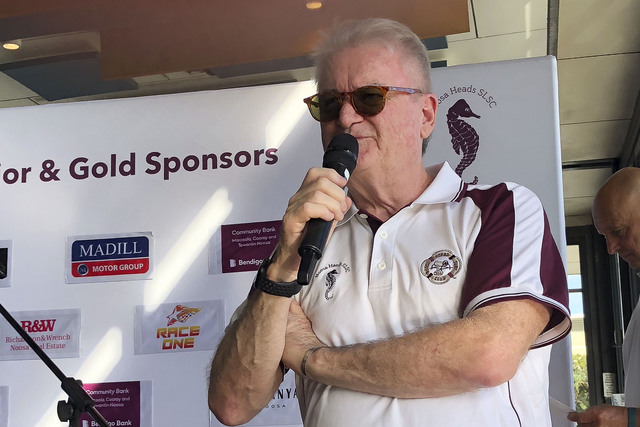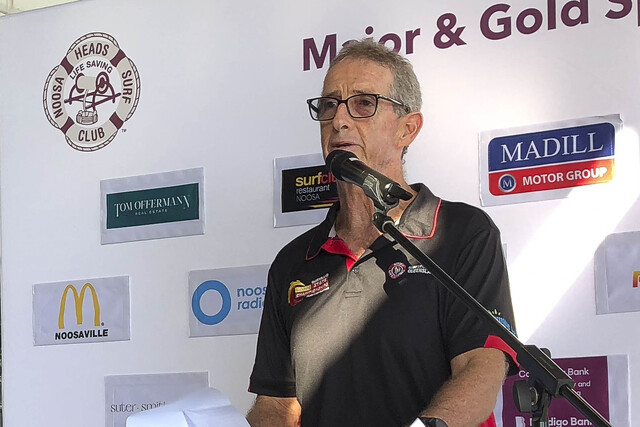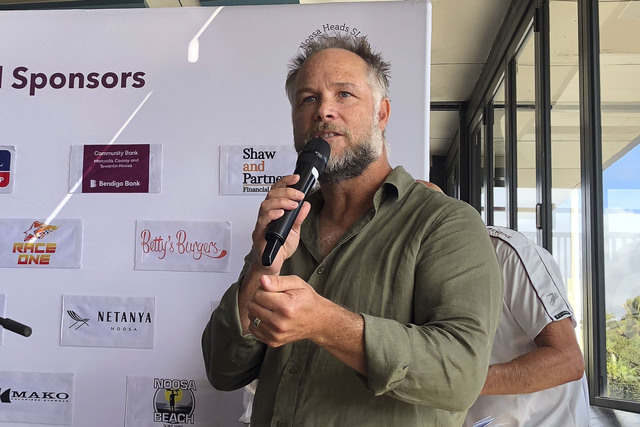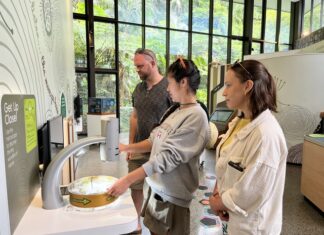The highly trained team that make up Noosa Surf Life Saving’s Emergency Response Group (ERG) prefer to fly under the radar, so much so even some members of the surf club are not aware they exist, but last week ERG coordinator David James spoke about the elite group at the club’s sponsorship breakfast.
With a career as a police officer, detective, barrister, a surf club member since 1986-87 and the Sunshine Coast search and rescue coordinator prior to the arrival of the Water Police Mr James coordinates Noosa’s ERG, a 24/7 rescue group that operates in partnership with emergency services across various clubs.
ERG was originally emergency surf rescue, formed in 1992 at the request of police in conjunction with SLSQ. Noosa was the first club to commit to ERG working with lifeguards and police, and has been at the forefront of its expansion, Mr James said.
Recently surf life saving skills and equipment have been identified as able assist in counter-terrorism disaster issues.
What do the ERG do?
“You’ve seen recently the article about young boys washed out to sea at Sunshine Beach just before the cyclone. That’s the sort of work we do, with the lifeguards, if they’re available,“ Mr James said.
“Our primary role is surf rescue, after hours. There are a lot of jobs we get. Generally around that 6pm when young surfers or tourists get in the water and get pulled out in a rip and we respond. In busy conditions when there are a lot of tourists here we ensure some of our members have rescue equipment at home and respond from there.“
And the team is proud of its response time at about 15 minutes from receiving the call for help to having a team loading gear or launching.
Mr James said ERG’s role had expanded past after hours surf rescue and from beaches to inshore rescues, deploying from the Maroochydore River to Noosa North Shore, assisting other clubs that don’t have suitably qualified people.
“In recent years our duties have included supporting the ambulance, getting them in and out of the national park to access patients, by rescue boats or vehicles. We’ve had to do jobs such as go in and find the police when they’ve been lost in the national park and bring them out,“ he said.
The ERG are called on to assist ambulance and fire and emergency officers to help retrieve patients from the beach or during rescues from the rocks.
They also have operators qualified to operate with the helicopter at night on jet skis.
“They find someone out there, we have to launch through the conditions at night, get out and pick them up,“ Mr James said.
“During the floods in Noosa several years ago, we had a primary role there with SES flood boats and QFES’ swift water rescue teams. Our vessels are highly manoeuvrable and at night jet skis are also competent. We are not infrequently asked to launch in the river and take paramedics out to boats on the other side of the bar. We work with helicopter rescue service closely. Whenever possible at night we try and get them to come up and provide some aerial support for us. We have not infrequently been asked to support the lifeguards during patrol hours when they’ve been overwhelmed with issues. Jobs such as setting up helicopter landing zones or taking over the beach when the lifeguards had to move into the national park.“
Mr James said Noosa’s had “a big history“ in this area and the surf club board were ahead of the game with the provision of equipment including a dedicated vehicle and boat and in taking the view during construction of its training shed at Project Ave, Noosaville, that it could be multi-purpose.
“They sought some input from the police and emergency services,“ he said. “The facilities are multi-purpose, not only as a training and storage facility for Noosa surf club. It can be, within minutes, multi purpose in an emergency service coordination, command and staging facility.
“Recently with the cyclone the SES were concerned, as were the police, their operating base at Kunda Park would become isolated by floods, so they came up on the advice of police who were aware of our facility.
“They came and had a look and decided to move their operations up here. The shed easily accommodated 40 SES plus our 15-20 members, a number of vehicles and flood boats. They then ended up down the Gold Coast where need was required.
“But it was a useful exercise to see what our facility could do. The facility has a number of large screens that are computer compatible, so briefings can be done. It has a fully operational workshop. They were very impressed that they can service their vehicles, if needed, more importantly their chainsaws.
“The facility is there for the community if needed.
“The facility has now been approved by the Queensland police service counter-disaster command as an authorised command and staging facility for the SES, fire, police and ambulance if needed.“
Mr James said most ERG members were members of the surf club, patrolling members who are also members of operation support, jet ski operators, duty officers, some being former helicopter rescue officers.
“We have a very high standard,“ he said. “They all have specialised training in the operation of our craft. Many have advanced skills in first aid.
“I think our role will continue to expand with the support of the club.“
Mr James was among several speakers at the breakfast event, including SLSQ state president Gerard O’Brien and SLS South Australia CEO Damien Marangon.









